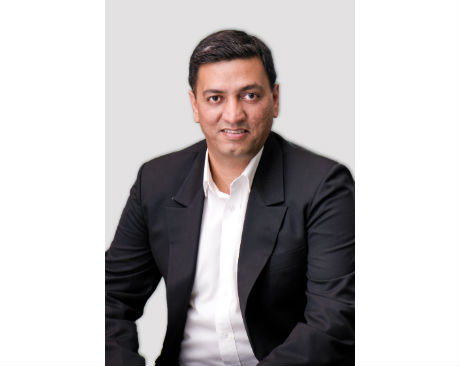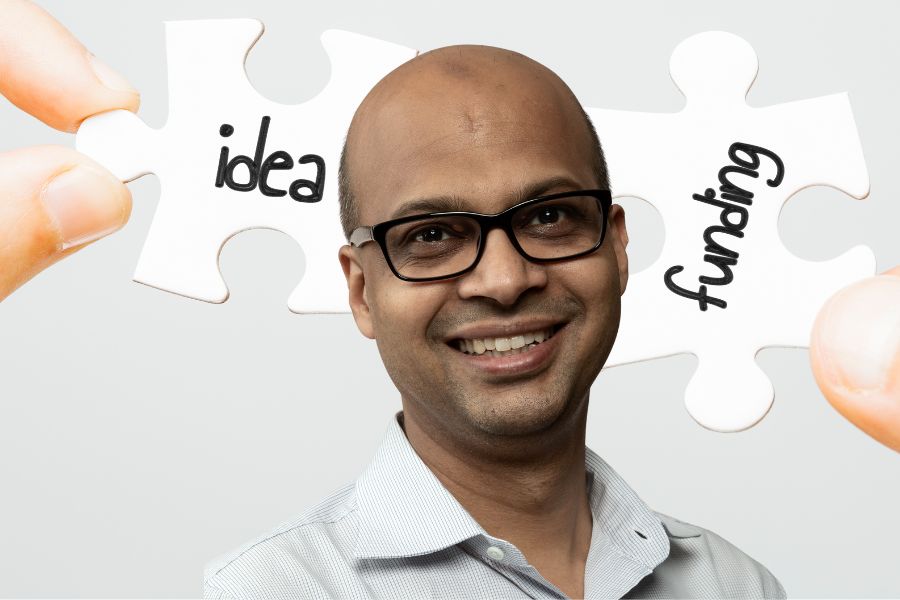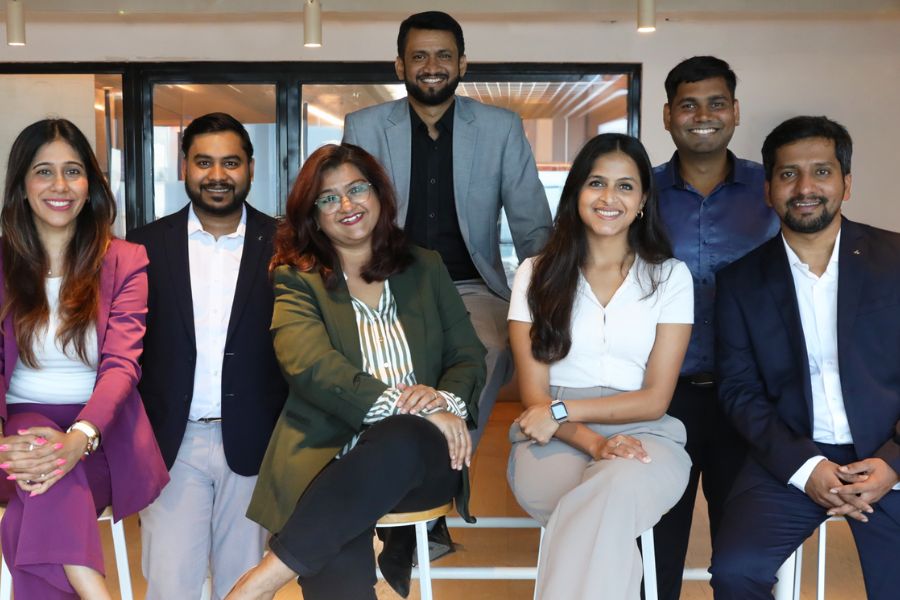There are far more internet users in India than there were in Yahoo's heyday in this market. But advertising wasn't priority then for service providers. Today it is, but there are many more digital and mobile avenues for brands to reach consumers, in a more targeted way. Why do you think Yahoo is still relevant for advertisers in India?
Nitin Mathur (NM): Consumers just don’t do one thing on the web. If I am a news junkie, that doesn’t mean I’m only on news. I’m also on mail, and I must be checking cricket scores. So, the power we have is that we know this behavior of consumers across different platforms. I think it’s an advantage. You only get scale when people come to you for more reasons than one. From an advertising stand point it’s an advantage as people come for communication, mail, sports etc. That is what has kept us relevant.
From a Yahoo standpoint, we do want to focus on what we believe are the core daily habits of users.
Yahoo has slowed down on mass media advertising in India (we saw TVCs in 2010/11). Is this in line with the global strategy? Will we see a mass media push anytime soon? Why?
NM: The last TVC we launched was around December 2010 for Yahoo Messenger. The way we’re looking at marketing has changed a little bit. We’ve leveraged mass media several times. We’ve gone out in the market whenever we had new products and services which needed to be brought to the market at scale. There are choices of using mass media versus digital media.
We’re the ones who are propagating how we need to leverage digital, so most of our own marketing efforts are digital. If you think about where Yahoo is today and the direction we are taking, if there is one thing that stands out, it’s our focus on mobile and mobile products.
In the last two years, we’ve pivoted our entire business on mobile. It’s a journey which started by making sure we have the right people – be it engineers or product managers. We got the right people on board, with Marissa as CEO at Yahoo.
We clearly defined our strategy as a company that wants to focus on mobile, given how usage is happening on the medium.
We’ve got news content, finance content, communication products, search, entertainment and photos among others. Look at what people are really doing on mobile – at the top of the heap is communication channels whether it’s social or messaging. Secondly, people are searching for stock quotes, weather, news. You think about the core daily habits and you look at your portfolio, it’s almost like ‘why aren’t we doing this much better than the competition?’ We started re-imagining all our services for mobile. We looked at our weather app, mail (which has always been a strong feature for us) and looked to make it more interesting through our app. Our mail app was launched last year.
The only thing that people have in finite quantity is time. If they can do three things on Yahoo faster (than other services), that’ll probably get them to do four or five things overall. So, we’ve launched this ‘multi-talented’ mail app about two months ago, with tabs for news, which has a filter to make you look at the kind of news you want to look at. We’ve integrated many of our properties, within this app. We’ve got weather, integrated also within it. We also tied up with Live Nation to stream one live concert everyday through our app. For weather, we’ve got a group on Flickr called ‘Project Weather’ and people submit these photographs. We’ve seen that the engagement has gone up by 3x, just because of this.
These are examples of how we are just redefining what we want to do on mobile. We want to invest in products and see the traction happen on that front.
So, coming back to the question, when you think about the kind of products we’re bringing to the market, the kind of marketing needed is slightly different.
When we launch apps like Flickr in India and other markets we have to see the local insight. It’s the same app worldwide, but how it’s marketed becomes very different. In India, we know people just like capturing fun moments, so we launched a digital campaign which is called ‘What lights up your day’, which got people to contribute on a creative group.
In Manila, which is known as the selfie capital of the world, we launched a contest when the word was declared word of the year.
In Singapore, people are crazy about clicking photos of their food. So we launched something around food photography there.
So, these are examples of us customising our marketing. How marketing has changed at Yahoo, depends on the products we’ve launched in the market. We’ve got to fish where the fishes are, and that’s about advertising.
Another activity in India was the Flickr Rides campaign where we tied up with Xbhp. It was launched late last year. We gave bikers phones with the app, and we asked them to go around and click pictures for the group. It’s interesting how biking and photography has such a strong connection and we bought these two passions together. We looked at the offline-online integration through this.
Speaking at Cannes 2014, Marissa Mayer said that Yahoo had a revenue growth of 98 per cent in the first quarter across mobile, social, video and native. What has happened to the overall growth?
Yahoo saw 450 million monthly active users for the very first time in Q2, 2014, representing more than 100 per cent growth in just two years – 36 per cent increase year-on-year. Time spent on mobile grew 79 per cent in the last year alone.
In terms of revenue, we delivered $1.04 billion ex-TAC (Traffic Acquisition Cost) globally.
Globally, mobile native ad revenue has grown 3.5 times over since the start of Q2, 2014. Stream ads have been a particular point of strength, and they continue to deliver for advertisers.
We are encouraged that search and mobile continue to show strong year-over-year growth. In fact, Q3, 2014 was our seventh consecutive quarter of year-over-year search revenue growth ex-TAC globally.
Along with video, native and mobile, there’s a huge focus coming from the programmatic side and how digital buying is moving towards it.
We recently launched Yahoo stream ads across PC and mobile. Across any Yahoo app, you’ll see native ads.
We are seeing a lot of traction around the native ads in India.
Mayer had also stated that she believed that native advertising is the key to monetise Yahoo; other reports suggest that all mobile advertising on Yahoo will shift to the format. Will the same apply to India?
Yahoo’s revenue model is that we have display, search, native and video when it comes to advertising. The way we look at the advertising architecture is that we need to be present across these segments as they have different needs for advertisers.
For example, Yahoo premium ads are about large canvas, rich media digital ads on the Yahoo home page, and mail login page. Clients need it and they aren’t going anywhere.
Then we have Yahoo Audience ads. These are essentially when you’re looking to buy a particular segment on Yahoo or off Yahoo, because we plug in a lot of third party supply. This is about targeting audience and have custom-based advertising efforts.
Then we have native, search and video. All these will exist parallelly. You’ll see momentum on native ads being higher, because we’re introducing innovative products within that.
But, I see it as a strategy of all of them existing together.
Who would Yahoo call its competition today? Would it still primarily be MSN and Rediff?
Our main competition is around the time that consumers spend. We are fighting with consumer attention. If consumers spend more time on our apps and products, that’s what we really care about. India is a market that’s growing so fast, that it’s not about snatching share from each other; it’s about growing the market. We’re fighting for our own share of consumer attention and time. Increasingly that’s going to be on mobile and that’s why you’re seeing a lot of products brought on mobile, including some local products.
Our Yahoo Cricket app on mobile and the mobile web has done incredibly well. It drives a lot of traffic for us because of local relevance. So, that’s the key to the competition. You need to relevant to the consumers, and have innovative non-intrusive advertising formats. Consumers also like advertising, because at the end of the day, even that is content. If you do this correct, you’re likely to get your fair share of advertising as well. That’s the focus for us at Yahoo.
We want to give the right products so that people can use Yahoo; they spend more time, we generate more inventory. When there is richer inventory, advertisers want to be with us, and we get more money out of advertising which is pumped into the product.
What service would be Yahoo’s USP in India? You spoke about the app being launched, where does e-mail stand?
The app itself has given it a jump. I think the way the dynamics are shifting in the market place, we continue to hold a strong share of mail on the PC and have a lot of users.
But, there are a couple of different things happening. What we are trying to do is get these users to use the app on mobile. There is a lot of internal education of users about the app.
Secondly, for new user acquisition – when you think about when in their life cycle people open up an account, we want to be relevant at that time. There are options in the market and you usually win if you have the best product.
Our marketing efforts need to be focused at when people are ready to make choices. Choices are now made at a real young age and we need to be there and how could we do more – these are things that keep me up in the night.
Specifically, 30 per cent of e-commerce sales happen through mobile in India. Is there an India-specific mobile strategy given 4G is coming in? Will there be an e-com play?
We see ourselves as enablers of that ecosystem. A lot of people ask us about Amazon, Flipkart investing. We see them as partners as they advertise on our site. For us, it’s about how do we help them reach their target audience and bring out solutions for them. They want to use our scale and ask us about solutions. If, more and more businesses start investing in India, whether it’s e-commerce or content, it’s great for us as we can partner with them to extend their reach.
Yahoo 'maintained leadership position in HK, Taiwan and Japan'. What explains this?
Our business in Asia Pacific is a mix of our own operated businesses and joint venture businesses. In Yahoo Japan, we are a minority stake holder in a JV.
HK and Taiwan are unique businesses and extremely strong businesses for us. We reach more than 95 per cent of the audiences in Taiwan. Similarly in HK, we are also number one. We’ve developed this unique advantage because we’ve catered to the local taste of consumers.
What’s unique about these businesses is that we have e-commerce in these two markets. So, the 'media plus e-commerce combination' is a great value proposition for consumers and advertisers as well.
Do you believe it's replicable in India?
We’re constantly looking for opportunities to say how we change our role in India, from being just a purely advertising platform to different ways of partnering brands. We are always open to ideas, and as and when we have something to share, we will.
What about Yahoo Messenger? Does that remain top of mind with consumers?
Honestly, we’ve seen some erosion. That’s a product we’re continuously looking at to see how we can evolve it. We don’t have any specific plans around that, but the messaging space continues to be interesting for us.
Just from a standpoint of social, we have Tumblr, which is a fantastic asset . We also have Flickr and Yahoo Answers.
While we believe our slightly broad portfolio is an advantage, we still want to focus on fewer things. We will continue to prioritise and de-prioritise things completely based on consumer feedback.




